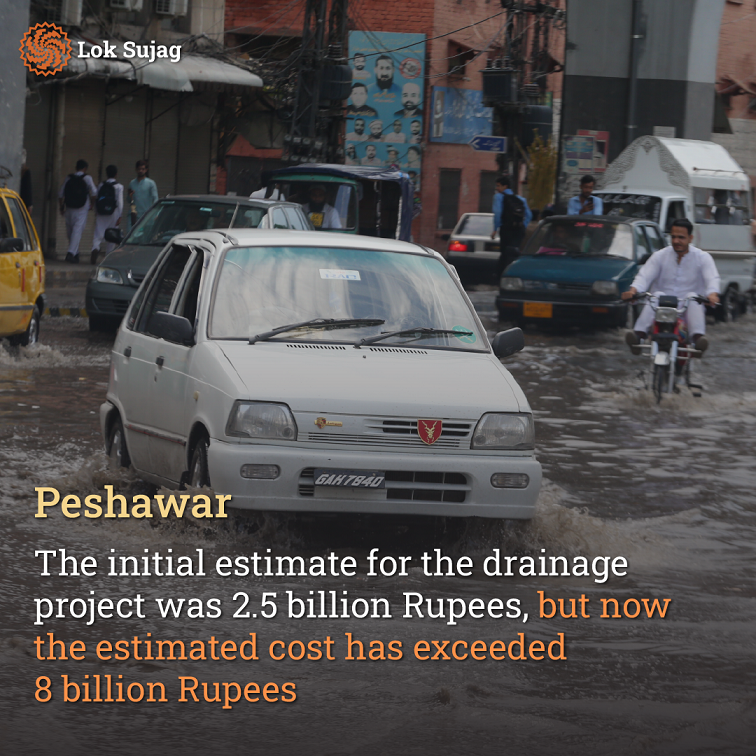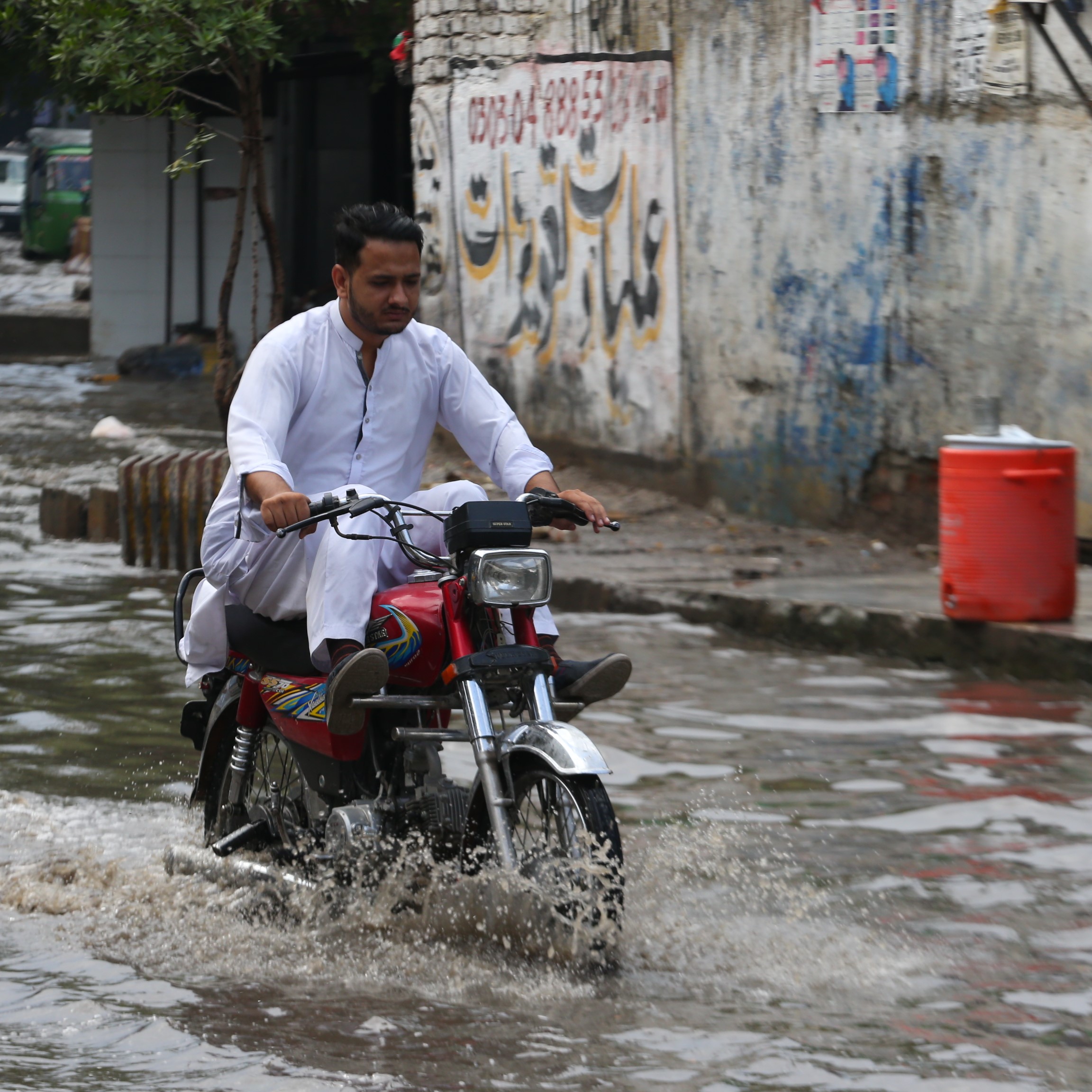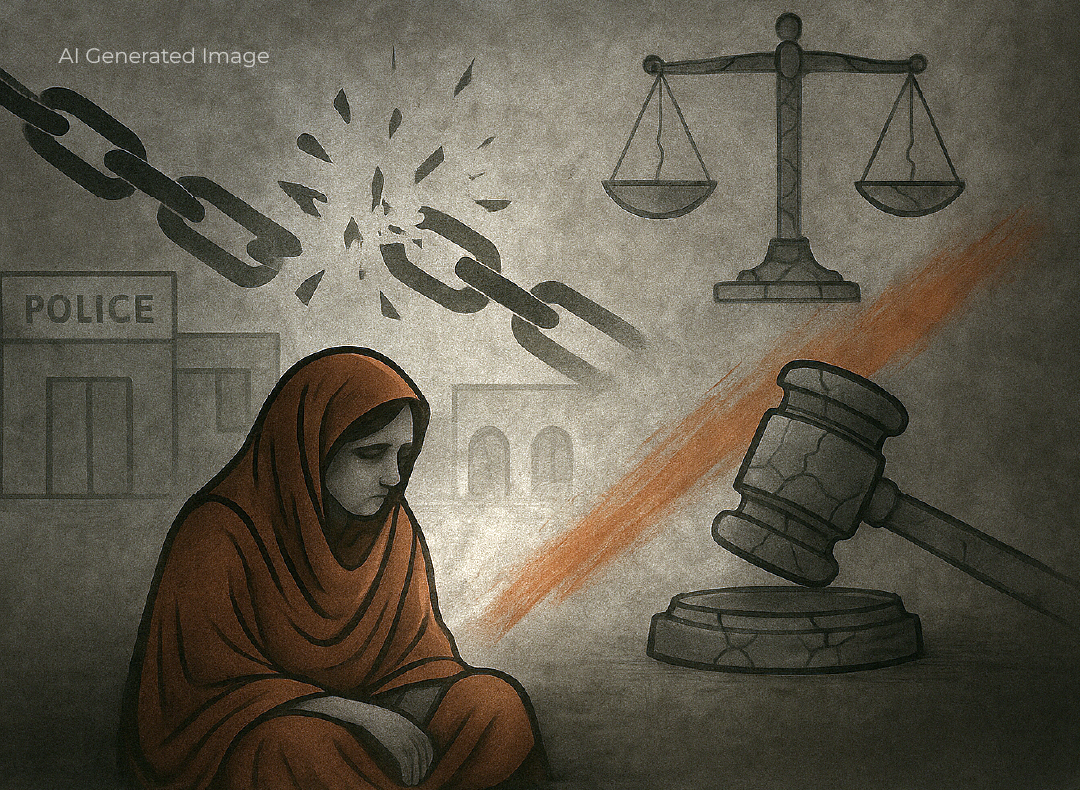In Peshawar, rainwater is drained from the city through a canal almost two centuries old. This canal was excavated in 1823 during the reign of Maharaja Ranjit Singh and has been the sole means of drainage for the city for two centuries. However, now, this ancient drainage system appears to be failing.
In 2021, the Provincial Disaster Management Authority initiated a project for protective measures during the monsoon season. This project explicitly stated that Peshawar is at risk of urban flooding, citing two main reasons: continuous and unregulated construction within the city and the burden on the outdated drainage system due to sewage water discharge.
The name of the canal used for drainage is Shahi Katha Canal. However, it is no longer in its original state. When this canal was constructed, the combined population of Peshawar and its surrounding areas was approximately 1.5 million, now reaching nearly 5 million.
According to a report compiled by the Capital Metropolitan (formerly City District Government), during the past 100 years, 239 government and 234 private buildings have been constructed on Shahi Katha.

The important thing to note is that these structures cannot be declared illegal or encroachments because the government has allotted them legal status in various phases. Many of these constructions were given to the public by the Deputy Commissioner in 1923, while 110 shops were also leased out by the district administration, making it difficult for the authorities to take action against encroachments on Shahi Kotha.
The government has constructed properties in its developments, including 36 in Butir Bazaar, 22 in Reati Bazaar, 18 in Jinnah Market, 13 in Khudadad Colony, 12 in Dalgaran Bazaar, 10 in Chowk Bazaar, 8 in the Vegetable Market, and three properties in Jhangirpura.
Additionally, ten public restrooms have been built near the canal at Thay Bazari Pass.
On Shahi Katha, there are 234 private constructions, including 109 properties in the Back Story Reading area, 19 properties in Khudadad Colony, 19 properties in Bazaar Bazazan and Bazaar Dalgaran, and 19 properties in Mochi Ladda.

Additionally, there are 17 properties in Reati Bazaar, 15 in the Vegetable Market, 13 in Pal Pekhtah, 11 in Reati Bazaar Loharan Street, 9 in Batair Bazaan, and three buildings under construction on Aejertan Road Qissa Khwani.
In Peshawar's inner city, to improve the inadequate drainage system, the Peshawar Sanitation Company conducted a survey immediately after last year's monsoon season, identifying 25 locations as hotspots. According to the survey, the identified areas in Peshawar include Kabootar Chowk, Ghareebabad, Patang Chowk, Children's Hospital, National Bank Colony Warsak Road, Hashnagri Chowk, Madina Colony, Charsadda Road and Rang Road Junction, Badshah Khan Chowk, Gulbahar Police Station, GT Road, Darani Road, Sikanderpura Bazaar, Lakhti Gara Drain, Kohat Gate, Nothia Bazaar Phatak Chowk, Maskeenabad, University Road near Usmania Restaurant, Kohat Road from Shahi Kotha, Gas Zone SNG Versace Road, and Laboratory Road. It was stated that if the drainage system is not improved in these areas, the threat of flooding will persist in Peshawar.
The drainage issue on University Road became prominent during the construction of the Peshawar BRT.

At that time, due to apparent political reasons, the previous provincial government of the Pakistan Tehreek-e-Insaf (PTI) required the timely completion of this project. During this period, the drainage management on University Road was under the authority of the Peshawar Development Authority (PDA), while the PDA was also carrying out the construction work for the BRT project.
Therefore, the drainage system was put on the back burner in favour of prioritising the BRT construction, and it was completed accordingly. As a result, even with minimal rainfall, University Road experiences significant water accumulation, leading to flooding on the road.
In July 2022, the Peshawar Sanitation Company handed the management of Peshawar's Ring Road and University Road to the Peshawar Development Authority (PDA). However, the drainage canal maps for this area were not provided, leading to various issues for some time. Subsequently, upon the provincial government's intervention, canal maps were provided. After this, modelling for several canals on Ring Road began, initiating changes in the drainage system.
Also Read

Rapid decline of agricultural land in Peshawar due to unplanned housing schemes: A concerning trend unfolds
Following the directives of the late Chief Justice of the Peshawar High Court, Waqar Ahmed Seth, all relevant authorities in the city were convened to initiate the task of restructuring the drainage system and moving away from canals. A project was proposed in this regard, which entails diverting the drainage water to separate drains instead of channelling it into Peshawar's rivers.
According to the Peshawar Development Authority's initial estimates, the project was valued at 1.25 billion Pakistani Rupees. However, it has now exceeded the estimated cost and reached 8 billion Rupees.
According to the revised PC-1, this project will now be completed at 8.832 billion Pakistani Rupees. This cost includes rehabilitating affected roads while providing an alternative drainage system, providing electricity and other facilities, and land acquisition. Although this revised estimated cost has not yet been approved by the Provincial Development Working Party (PDWP), 80 per cent of the work on the Warsak Gravity Canal, 70 per cent on the Hazar Kkhwani Canal, and 75 per cent on the Kabul River Canal has been completed in Project Package One.
It is hoped that the completion of this project will not only save the rivers from pollution caused by dirty water but also alleviate the severity of drainage issues in Peshawar.
Published on 4 Oct 2023




















